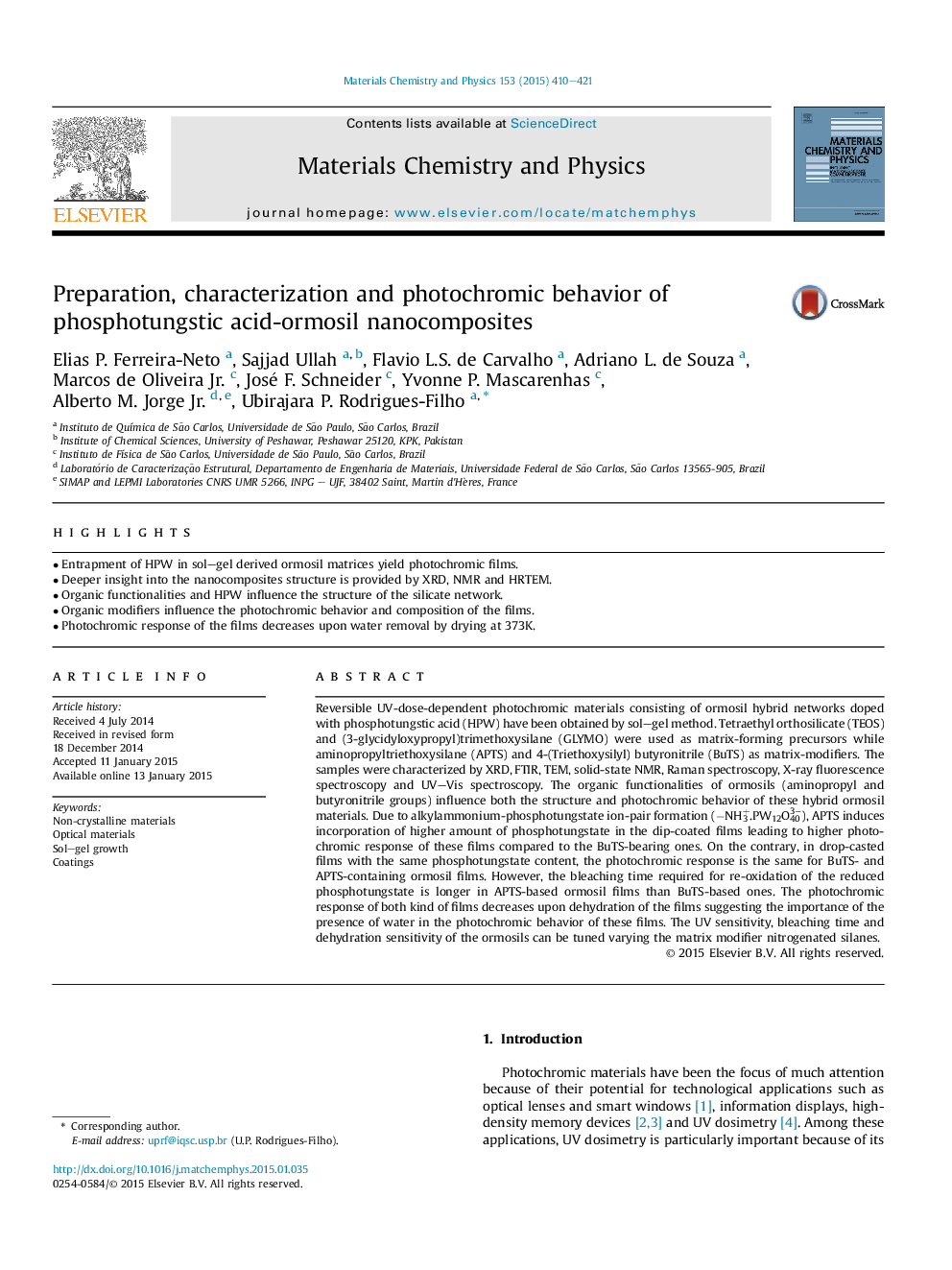| Article ID | Journal | Published Year | Pages | File Type |
|---|---|---|---|---|
| 1521587 | Materials Chemistry and Physics | 2015 | 12 Pages |
•Entrapment of HPW in sol–gel derived ormosil matrices yield photochromic films.•Deeper insight into the nanocomposites structure is provided by XRD, NMR and HRTEM.•Organic functionalities and HPW influence the structure of the silicate network.•Organic modifiers influence the photochromic behavior and composition of the films.•Photochromic response of the films decreases upon water removal by drying at 373K.
Reversible UV-dose-dependent photochromic materials consisting of ormosil hybrid networks doped with phosphotungstic acid (HPW) have been obtained by sol–gel method. Tetraethyl orthosilicate (TEOS) and (3-glycidyloxypropyl)trimethoxysilane (GLYMO) were used as matrix-forming precursors while aminopropyltriethoxysilane (APTS) and 4-(Triethoxysilyl) butyronitrile (BuTS) as matrix-modifiers. The samples were characterized by XRD, FTIR, TEM, solid-state NMR, Raman spectroscopy, X-ray fluorescence spectroscopy and UV–Vis spectroscopy. The organic functionalities of ormosils (aminopropyl and butyronitrile groups) influence both the structure and photochromic behavior of these hybrid ormosil materials. Due to alkylammonium-phosphotungstate ion-pair formation (−NH3+.PW12O403−), APTS induces incorporation of higher amount of phosphotungstate in the dip-coated films leading to higher photochromic response of these films compared to the BuTS-bearing ones. On the contrary, in drop-casted films with the same phosphotungstate content, the photochromic response is the same for BuTS- and APTS-containing ormosil films. However, the bleaching time required for re-oxidation of the reduced phosphotungstate is longer in APTS-based ormosil films than BuTS-based ones. The photochromic response of both kind of films decreases upon dehydration of the films suggesting the importance of the presence of water in the photochromic behavior of these films. The UV sensitivity, bleaching time and dehydration sensitivity of the ormosils can be tuned varying the matrix modifier nitrogenated silanes.
